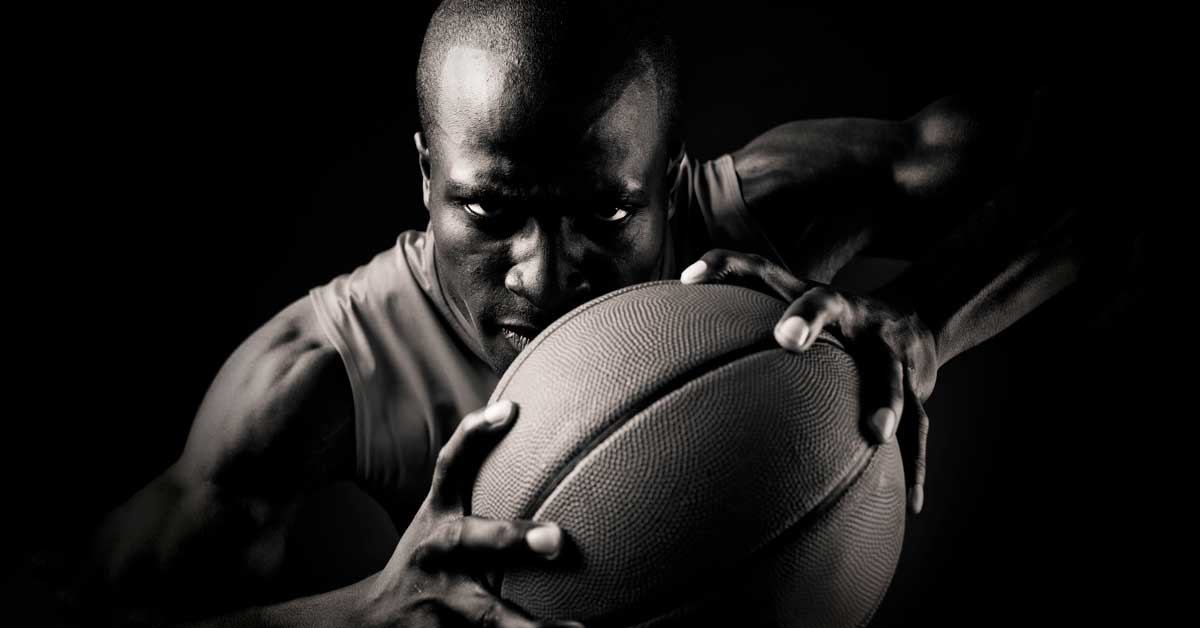
Every single time you see an athlete do something superhuman, it is the summary output result of a multi-layered circuit of subsystems. These subsystems include the central nervous system, endocrine system, immune system, cardiopulmonary system, and more. This is key because, as practitioners, we can affect these subsystems via things like proper program design, exercise selection, nutritional programming and periodization, sleep hygiene interventions, and much more.
I take a holistic approach when it comes to assessing and fashioning solutions for health and performance. I realize the word “holistic” has gone the way of “functional” and has somewhat lost its meaning. When I say “holistic” approach, I mean approaching human performance as a constellation of systems that behave symbiotically.
The analogy I like to use is that the human organism is a series of decentralized economies that communicate for the betterment of the organism as a whole. In other words, your nutrition, sleep hygiene, recovery habits, immune system, allostatic load, and other factors all feed into one another in some way. If our role as practitioners is to optimize that organism, we need to truly understand the relationship among these functional systems.
It takes technology to truly get an accurate proxy of what’s going on under the athlete’s ‘hood’ says @coopwiretap Share on XWhile there are plenty of levers to pull, some of these things can be best influenced only if they’re truly understood. Most of this understanding is built on an effective mix of relentless research and the right kind of experience, with some shameless experimenting and creativity along the way. While the art of coaching reigns supreme at the foundation, it really does take technology to truly get an accurate proxy of what’s going on under the hood. For me, this means the Omegawave System (Team edition).
Taking the Athlete’s Inventory: ECG and EEG Analyses
Instead of drawing up an extended product data sheet, I’m going to give a brief summary on what the system is and what it does. From there, I’ll move on to case studies and practical examples to provide real-world context—which is how coaches and athletes reading this will likely best learn.
For those unfamiliar, Omegawave is a field lab that allows you to gain professional-grade diagnostics in a convenient, mobile format. Omegawave takes measurements relevant to an athlete’s physiological condition, including:
- An ECG-based analysis, which provides HRV and cardiac/autonomic nervous system analysis.
- An EEG measure of “DC-Potential,” (slow cortical potential) and CNS analysis, which indicates the brain’s ability to regulate the central nervous system (and thus coordinate the multiple subsystems “beneath” it).
The system provides something of a dashboard for your athlete’s current functional state, as well as a means to plot progressive adaptations over time. This is profound because it not only helps us identify which physiological limiters are trapping an athlete’s health and performance, but it also enables us to take a program design model based on individual athlete physiology. By having the ability to validate adaptation and ensure that our plan is working, we’re able to not only engineer best results, but also guarantee we’re not wasting any time spinning wheels on the road to success.
The autonomic and central nervous systems govern biological adaptation to activity. They regulate the transportation of oxygen and substrate to the working muscle, mobilize energy resources, program hormonal expression, clear the by-products of oxidation, and control conditions for anabolic processes in muscle tissues. Therefore, an evaluation of adaptation processes requires the examination of the following areas, which we are getting professional-grade readings on here:
- Central nervous system status
- Autonomic nervous system status
- HPA axis regulation
- Neuromuscular potential
- Energy metabolism
- Cardiac system status
- Detoxification system (excretory) regulation
- Gas exchange regulation
Omegawave summarizes your current state and provides key “check engine lights,” focusing on the central nervous, cardiac, metabolic, hormonal, and detoxification systems. This starts the conversation to help identify any limiters to health and performance: diet, sleep, stress, poor training decisions, lack of recovery, and more.
I use Omegawave as part of an assessment process to identify limiters to make precise, data-driven decisions with athletes’ health and training programming. This allows us to understand how much stress and what types of stimuli to engage our athletes with in order to ensure adaptation.
#Omegawave allows us to measure each athlete as the complete system they are, says @coopwiretap. Share on XOver time, we are looking at how our athletes adapt to our nutrition, training, and health-related choices in order to see where we may need to adjust, course correct, or validate our programming decisions. Simply put, Omegawave allows us to measure each athlete as the complete system they are and ensure that our long-term plan together leads to success.
Engineering Accountability
One of the absolute best things Omegawave has done for my process has been taking emotion out of the areas where we don’t want it. You see, when it comes to treating the body as the system that it is, most athletes just don’t get it. Instead, they focus primarily on their training in a “more is more” mindset and have a vague sense of a need to be healthy. In my experience, this doesn’t generally translate into even a sufficient baseline level of healthy habits to make the requisite difference and drive adaptation.
This is less a specific one-off case study and more of a research summary from a larger population sample size. On the whole, I’ve had many athletes who didn’t see the value in doing things like not consuming junk food ad libitum, being sure to cut the electronics off at a reasonable hour at night, and trying to look beyond typical “fitness supplements” when it comes to ergogenic needs.
You can argue that the reasons behind this vary from athlete to athlete—and some might think this “health first” model is just my own system that I choose to believe in, which is fair. The lack of preventative health measures that get media attention compared to other athlete rituals could also be to blame. For some, a lack of education is the main driver.
While the value of conveying how much you care organically will never be replaced (such as looking someone in the eye and simply taking the time), Omegawave has given me an effective slam dunk in the buy-in department that saves everyone time and winds up accelerating results.
For instance: two of my basketball players train together, but treat their bodies vastly differently around that window of their time in the gym. One eats a nutrient-dense diet, relatively free of pro-inflammatory agents, and in the requisite amounts to enable both health and performance. The other treats his body more or less like an amusement park.
Now, understand that both athletes have received the same level of focused coaching in the areas of nutrition, sleep hygiene, stress management, strength and conditioning, breathwork, recovery, and everything in-between. Although we were still relatively early on in our relationship at this point, Athlete A was clearly getting it while Athlete B was not.
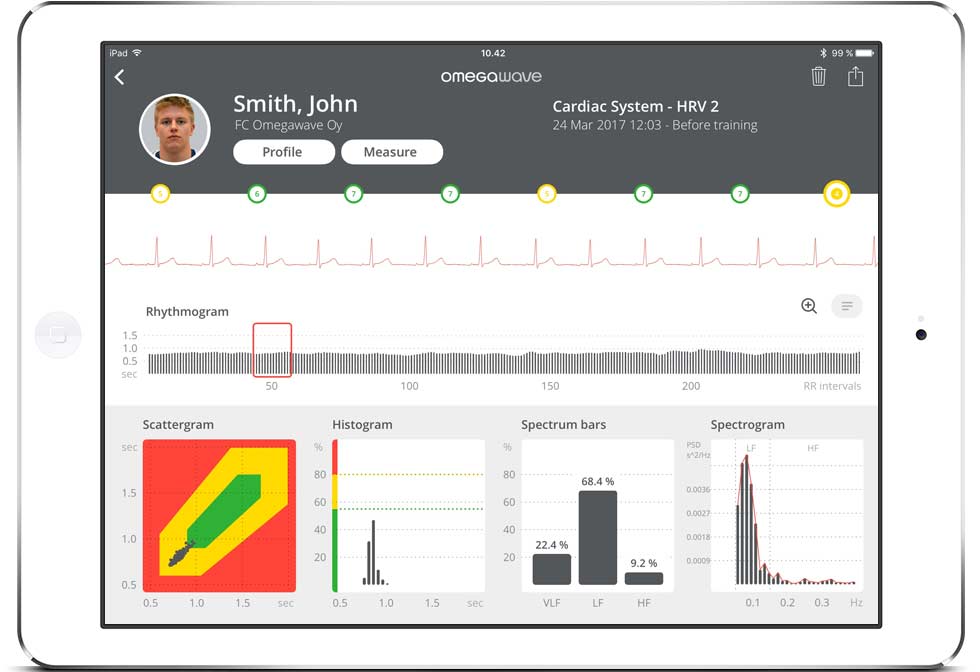
Enter Omegawave: It took athlete B receiving a series of check engine lights following Omegawave screenings concurrent with differences in each athlete’s performance for him to understand. In general, I have athletes that test early in the morning (total adaptation and recovery trends) as well as pre-training (window of trainability for fluid periodization). This athlete’s Omegawave profiling featured the following:
- Severely “dented” CNS
- Poor energy metabolism
- Hypofunction in the HPA axis (brain neuroendocrinology proxy)
He then witnessed the following in his own training:
- Lethargy with accelerated onset of fatigue.
- Less neural potential in the form of less explosiveness than his training partner.
- Loss of minutes to Athlete A even though he (Athlete B) had been the better player with a higher minute load previously.
Afterward, I had buy-in as a coach and he began to take my recommendations to heart. Our targeted interventions included some fundamentals that made all the difference: simple nutrition tweaks minimizing pro-inflammatory agents, increasing overall caloric load in each area, increasing nutrient density of food, prioritizing sleep, decreasing blue light exposure, and proper breathing to manage stress. For an athlete who wasn’t taking everything around the gym as seriously as necessary, these simple changes made a profound difference in the long run.
#Omegawave lets me show athletes that they need to take everything seriously—not just their training, says @coopwiretap. Share on XI use this as a key case study to show that not every coaching point is going to sink in with everyone immediately, and that’s okay. I believe that the involvement of Omegawave in my process has not only accelerated accountability, but also provided an objective means to meet athletes at their level. Omegawave helps me show them that they need to take everything seriously—not just their training.
At the end of the day, that’s what I’m really driving home to my clients: Health drives performance. Omegawave has given me the ability to do so in a precise, matter-of-fact capacity.
Functional Nutrition and Stress
For many athletes and coaches, nutrition seems to get boiled down into creating changes such as adding lean body mass, lowering body fat, and gaining a vague sense of getting healthier. This seems to have crept into the athletic and sport science world from the fitness industry. I feel it represents perhaps the largest area of deficit in both athletic program infrastructure and coaching on the whole.
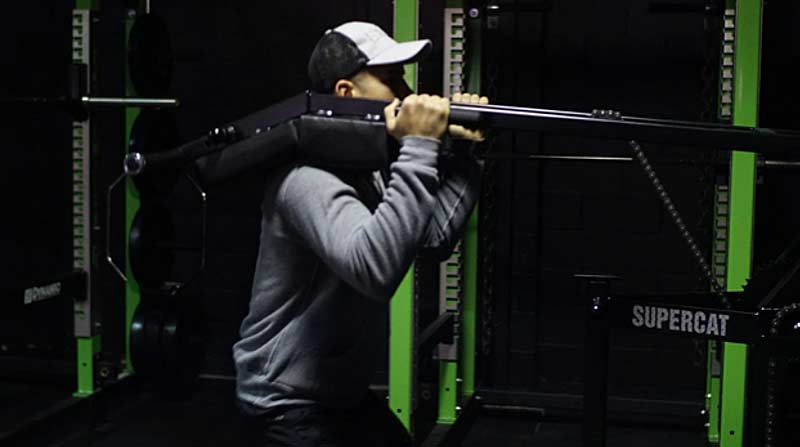
Although not known as a metabolic analytics technology in the same vein as a respirometer, metabolic cart, etc., what Omegawave can do is provide insight into an athlete’s functional systems that nutritional interventions can alter for the better.
For this case study, let’s look at Chris. Chris is an entry-level, amateur combat sports athlete whom I’ve worked with for some time. Because Chris has multiple trainings (sport skill and S&C), as well as a high-stress supplemental job, he’s got a wide array of stress inputs. Due to this and afternoon training times, this meant it was usually more useful to profile him with Omegawave pre-training as opposed to first thing in the morning. Chris’ Omegawave profiling and our evaluation yielded the following results across introductory readings:
- Consistent high-arousal state (sympathetic fight/flight/freeze dominant)
- Poor metabolic “coordination”
- Chronic breathing irregularity
- Hypofunction of HPA axis
Our intake protocol using the Omegawave also dug out nutritional deficiencies (macro and micro), a high degree of allostatic load (stress), and the fact that he regularly consumed a diet that negatively influenced his autonomic nervous system. Let’s unpack each of these.
Like many Type A high performers, Chris leads a sympathetic-dominant lifestyle, both in terms of training load and life load. For optimal health and performance, we ideally want to see him live a predominantly parasympathetic life around his necessary sympathetic times (training).
We began with getting to know Chris as an individual—the importance of unpacking the human experience cannot be overstated. Our response to his allostatic, or “life load,” was to integrate athlete neurofeedback along with some lower-barrier-for-entry lifestyle swaps, including meditation protocols, decreased behavioral stimuli, and connected breathing. This helped alter his perception of stressful situations and helped him respond versus react to life. This is always where we start, and this shift alone often results in enhanced results; this situation was no different, as you’ll find out.
The importance of unpacking the human experience of an athlete cannot be overstated, says @coopwiretap. Share on XPart of Chris’ perpetual high-arousal state was driven by his propensity for foods that provoked a response in the autonomic nervous system towards a sympathetic direction. Nutritional influence on the autonomic nervous system is something that is grossly overlooked. His diet was rich in foods that provoked an inflammatory response in the body. As has been established in research, the gut and the brain/nervous system complex are linked via the vagus nerve, a master regulator of the gut-brain axis. Certain pro-inflammatory, neurotransmitter-altering foods that are responsible for these high-arousal modifications (in this case, wheat, gluten, pesticides, excess dairy, monosodium glutamate (MSG) and refined sugar, plus artificial colors and sweeteners) were fairly regular indulgences.
Additionally, Chris consumed a surplus of foods that potentially threw off his GABA (gamma aminobutyric acid) to glutamate balance. For those who don’t know, GABA is a primary inhibitory neurotransmitter that is a relaxant in nature. Glutamate is the opposite in this context—an “upper,” if you will. Many of us consume an excess of the latter in modern nutritional templates with the food supply being what it is.
At any rate, our nutritional interventions sought to remove sympathetic drivers, as well as promote more GABA-glutamate balance. We also sought to further down-regulate Chris in the evening to promote more sleep since he noted that sleep quality was a recurring issue. I adjusted his nutritional programming to back-load his carbohydrates to later in the day. This is because cortisol is generally inhibited in response to an insulin spike, helping to downshift his nervous system ahead of resting hours. This cortisol-insulin opposing relationship is also a reason why carbs are craved as an allostatic load stress response. You could also argue the reversal supported his focus and training time to be necessarily sympathetic.
Something else to consider is the overall systemic effect these issues would have on an athlete or individual. Parasympathetic is affectionately known as the “rest and digest” state for a reason. If we are living in a perpetual sympathetic state, we cannot properly digest, absorb, or cellularly transmit nutrients. Excess sympathetic states are also upregulators of the immune system, which generally creates the scaffolding for a global inflammatory state and its consequences. These consequences include preventing the flow of nutrients in the bloodstream to tissues in need. This underpins the relationship between food and autonomics. Because autonomics govern the other organ systems and their processes in the body, this is validation of the old adage, “what you put in, you get out.”
The breathing irregularity, which was double-detected, was interwoven with all of this—if the brain is the master puppeteer of all of these subsystems, breath is the remote control of this software. Our mindfulness interventions helped to take care of this, which granted us greater global endurance, supported autonomic profile, metabolism, mood, and more.
On the whole—from assessment to program adjustment—Chris added lean body mass, oxidized more body fat, improved his performance in sport, increased his explosive strength, augmented his conditioning, shortened his recovery, and subjectively reports an overall improvement in his quality of life. This was all concurrent with improved Omegawave markers.
#Omegawave’s metrics served as canaries in the coal mine for physiological limiters, says @coopwiretap. Share on XOmegawave really helped start the conversation, with the metrics serving as canaries in the coal mine for physiological limiters. Our further conversation then dug up the origin story of these issues. Without Omegawave as a piece of the intake, some of these areas would have surely gone unnoticed…or perhaps not been identified until later on.
Physiological Program Design: Get in. Get out. Adapt.
Because the brain first processes all inputs, it’s critical to take inventory of its status. I’ve continuously found that Omegawave provides a noninvasive way for me to see the status of the brain, physiological subsystems, and its response to inputs. These inputs can include what I refer to as “deposits” or “withdrawals.”
Deposits are positive inputs to the system that promote recovery and facilitate the adaptation process to drive results. This includes proper nutrition, sleep, stress management, recovery and regeneration processes, breathing, and more.
Withdrawals ideally consist of positive hormetic stressors. Hormetic stressors are loads that are strategically induced to provoke an adaptive response and nudge the organism more towards resiliency, strength, and long-term performance. This ideally consists of the strength and conditioning sessions, practices, and games, and potentially certain programmed-in stressors like cold therapy, heat stress, and intermittent fasting.
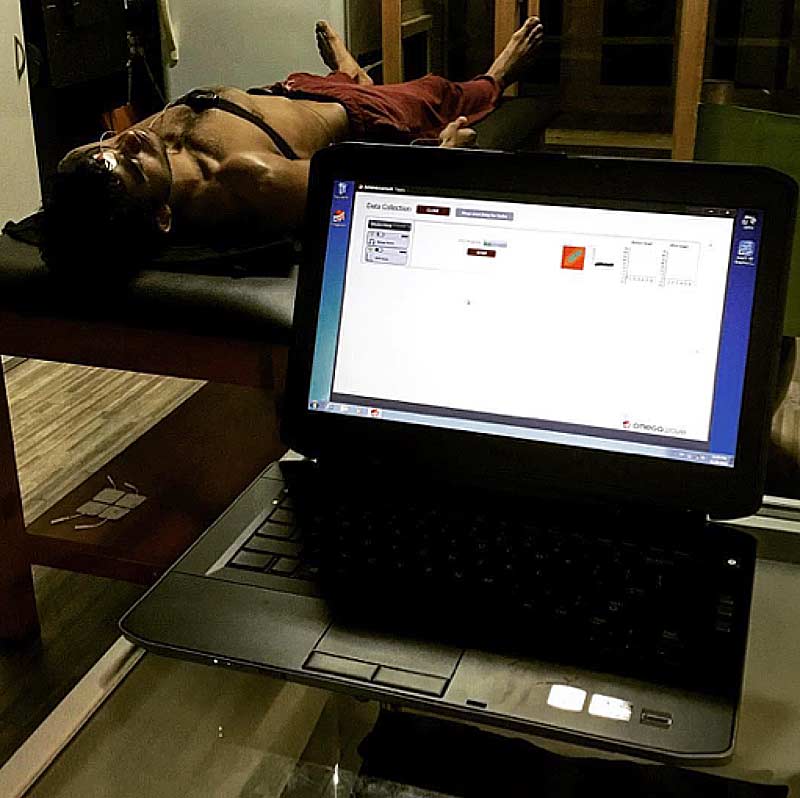
Unfortunately, the modern athlete often deals with a higher proportion of withdrawals than is ideal. Poor sleep hygiene, diet deficits, lack of strategy in organizing the training process, life stress, and the modern environment all combine to create a bank statement in the red.
We’ve established that health drives performance. So it follows that in order to create the right environment for adaptation, we as coaches need to create the right foundation for our athletes’ physiology to be primed. This essentially ensures the athlete has the biological foundation from which adaptation and performance can be expressed. It’s not a reach at all to position program design as not only an exercise in performance-building architecture, but also in effective management of these functional systems. Omegawave can assist both coach and athlete in getting a readout on this inventory and provide critical insights into where withdrawals and deposits can be balanced strategically. This can have a profound impact on program design.
It’s not a reach at all to position program design as effective management of physiological systems, says @coopwiretap. Share on XMy template for this involves perhaps the best use case for this type of physiological fluid periodization: the mixed martial arts athlete. For those who don’t follow, allow me to set the scene. Mixed martial arts might be the most complex sport to program for. You’re dealing with a population who use a full Rubik’s Cube of energy systems, display a diverse portfolio of strength types, and feature a full suite of neural and structural adaptations. This already-complex foundation can then be complicated by the fact that an individual fighter’s skill set can alter this needs analysis. It’s been said that CrossFit athletes, NFL linemen, and Strongman competitors are like building tanks whereas sprinters, basketball players, and NFL wideouts are like building sports cars. MMA is both.
From here, you’re also talking about athletes who are already likely sporting far too many withdrawals from skill work, blunt force trauma, and every other typical deficit (e.g., sleep, nutrition, etc.) you might find stuck in a team sport athlete’s bike spokes. Don’t forget that if you’re in camp, you’re dealing with the hormetic stress of caloric deficit and water manipulation.
My best experience to date with Omegawave came from working with an MMA athlete—Jon—who fights for a major fight promotion. Jon came to me with 12 weeks of prep time and needing to drop to a full new weight class. Jon’s skill coaches also insisted on a certain inarguable level of volume dedicated to skill work, as expected. Our evaluation also teased out major deficits in various types of explosive strength, maximal strength, reactive strength, and the kinesthetic system/propriospinal qualities.
My job then (for those keeping this wild score) was to build up certain precise adaptations in this time, get the fighter on weight, healthy, and ready to fight. Again, if ever there was a use case for fluid periodization and athlete monitoring, this was it.
With Jon, we routinely used Omegawave to take advantage of the system’s “Windows of Trainability.” According to Omegawave co-founder Val Nasedkin and Dr. Roman Fomin (now of the UFC Performance Institute), trainability is defined as the capacity to receive training loads (input) and adequately adapt to them (process), thereby producing a positive training result (output). The input is everything thrown at the athlete—not just training loads. Output is the result of the input. If we walk the line, we should expect to always secure a positive output. If this process is not well-managed, training inputs can have a detrimental effect rather than a positive one—this can also become chronic, leading to maladaptations over time. Safe to say we don’t want that.
This spotlights the importance of assessing the current functional state of the athlete. So far, I’ve spoken mainly of using Omegawave in the on-ramp process, in evaluation, and in looking at long-term trends. The truth is that every athlete, at each training session, has a unique internal environment. This under-the-hood status is a summation of the interaction of all subsystems—the stress reservoir, if you will. That reserve is physiological currency in the bank that an athlete can spend in the form of withdrawals. These currencies can be specific.
An open Window of Trainability represents an ideal functional state of an athlete—meaning that the athlete’s physiological systems are primed for any reasonable volume of any training input/load needed. This spans endurance work, maximal strength work, explosive strength and high neural output exercises (e.g., plyometrics), and motor learning. A closed Window of Trainability may point to a non-ideal day/time to apply any load or certain loads.
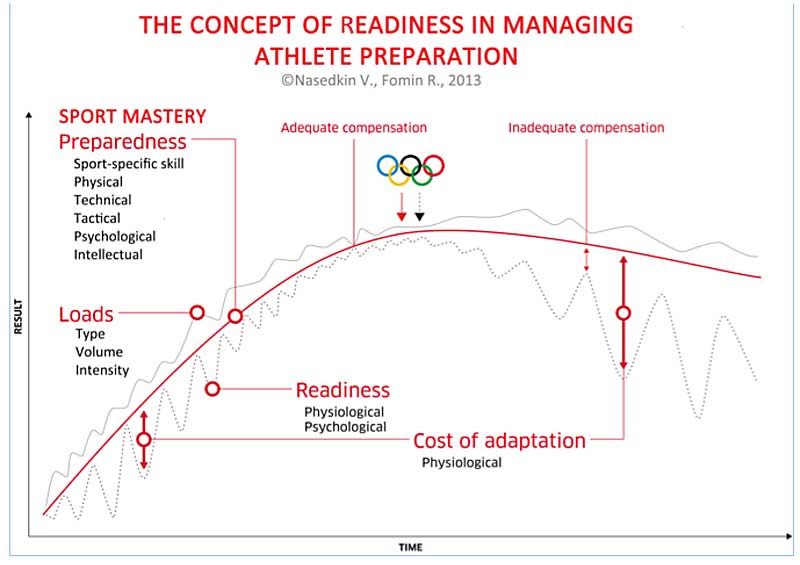
With Jon’s inputs and needs, this meant using this Window of Trainability approach to both program and pivot based not only on needs, but current levels of readiness. Throughout camp, we had to be careful to ensure we weren’t just beating the hell out of him and sending up a prayer to hope he improved. Our goal is adaptation at the end of the day and full adaptation cannot occur without a bedrock of health beneath it. At the same time, Jon also needed to build up requisite levels of conditioning and strength to meet the demands of his sport. We couldn’t send him into battle ill-prepared.
We used Omegawave to get a proxy on each subsystem of the body to get regular readouts on which training load should be applied when. This meant thinking on our feet. For example, if Jon slept poorly and was pushed too hard in wrestling, then perhaps his body was only ready to go for various types of conditioning work and strength work.
This Window of Trainability was closed for motor skill acquisition and high-order explosive movements. For us, this could mean abandoning all or parts of the planned workout and hitting them later in the week, swapping sessions. Sometimes this meant still testing certain higher order explosive movements, but shaving down the volume. Lastly, given a couple bad readings, this may also have meant we programmed in a spontaneous recovery day.
Jon’s training program included plenty of higher order “CNS training” ala Marv Marinovich, Nick Curson, Frans Bosch, Verkoshansky, Innosport, etc. His program also included needed energy system development. All of this was layered on top of a high cost (high input) load from all of his training and cutting weight. From here, we had to navigate complex schedule circumstances. With Omegawave, we were able to get in, get out, create the useful adaptation we needed, and avoid detrimental training effects.
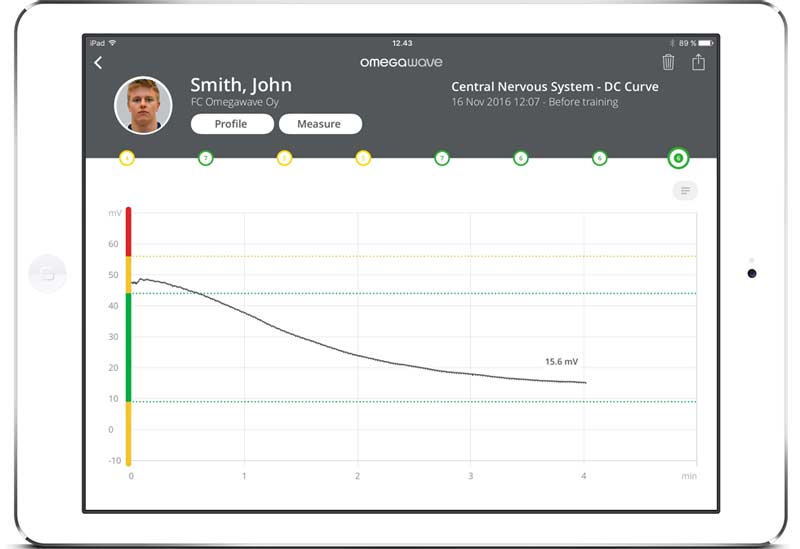
In the end, Jon improved a variety of transferable training qualities, including CO2 tolerance, overall conditioning, breathing, maximal strength, explosive reactive strength, kinesthetic system qualities, cognitive processing, rate of force development, and more—all while making his new weight class without suffering in the sauna/bath.
To layer everything else on the table, we also took labs for additional biomarkers—this helped guide our decisions. We programmed in additional recovery modalities, including light therapy, direct current electrical stimulation (also for performance), mindfulness installations, breathwork, pulsed electromagnetic field therapy, and more.
Safe to say, Omegawave served as our compass to appropriately load Jon. The timing of a training load has as large an impact on adaptation as the volume and intensity of that load. If all loads are slapped onto a foundation of your physiological systems, an inappropriately timed load can be highly detrimental while the opposite can truly optimize adaptation. In other words, you can’t pour perfume on a pig.
This ensured we were always measuring and being surgical in our vision rather than simply guessing based on cookie-cutter templates. In fact, I’m not sure how I would program for combat sports athletes without athlete monitoring technology due to the physiological Bermuda Triangle at play.
Health and Performance Compass
Omegawave helps coaches and athletes alike get invaluable insight into big-picture decisions, such as program design, validation of adaptation, and fluid periodization. Going deeper, Omegawave is a portable lab for the brain, central nervous system, energy supply system, cardiac system, HPA axis, cost of training, and more.
#Omegawave is a portable lab for the brain, #CNS, energy supply system, cardiac system, and more, says @coopwiretap. Share on XAs holistic human performance models continue to become validated, the need to be able to measure and make a difference in key areas within and around training are only going to come to the forefront. Omegawave was years ahead of its time and should only continue to gain popularity beyond simply being known as just another “me too” stress index device.
Since you’re here…
…we have a small favor to ask. More people are reading SimpliFaster than ever, and each week we bring you compelling content from coaches, sport scientists, and physiotherapists who are devoted to building better athletes. Please take a moment to share the articles on social media, engage the authors with questions and comments below, and link to articles when appropriate if you have a blog or participate on forums of related topics. — SF


Ein sehr guter Beitrag, fachlich fundiert und verständlich erklärt. Da ich erst wegen persönlicher und arbeitstechnischer Überlastung 1 1/2 Jahre krank war und ich mich wieder intensiv um meine Gesundheit kümmern muss ist mir die Intensität des Programms bekannt. Die Gewichtung von dem Programm ist dehr hoch. Großes Lob an die Programmierer und Betreuer des Programms.